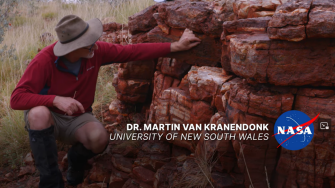NASA and ESA visit the Pilbara with the LifeSpringsMars team
In June 2023, LifeSpringsMars Program Director Prof. Martin Van Kranendonk led members from NASA’s Mars Exploration Program, the European Space Agency, the Australian Space Agency, and CSIRO on a field expedition to the Pilbara region of Western Australia.

